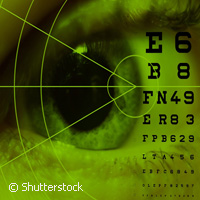Gene linked to nearsightedness spells hope for treatment
EU-funded scientists have discovered a gene associated with myopia (nearsightedness). Their finding, presented in the journal Nature Genetics, provides insight into the genetic basis of the world's most common eye disorder. Myopia is an eye condition in which close objects are seen clearly but distant objects appear blurred. Nearsightedness basically occurs when the light entering the eye is not focused properly, triggered by either the eyeball being too long or the cornea, the transparent cover of the eye, being too curvy. The researchers, led by King's College London in the UK, note that while the discovery of a gene does not automatically make a treatment readily available, a number of gene therapies do exist and are already working in some eye conditions. So myopia could potentially be a good candidate condition for gene repair, according to the team. 'The eye is already an organ of choice for gene therapy, for example, because the eye's small volume and self-contained area allow the therapy to remain inside the eye in a concentrated volume,' explained Professor Terry Young, a researcher at Duke's Center for Human Genetics and co-lead author of the study. 'In addition, the eye's accessibility lets clinicians observe the effects of treatment over time with noninvasive methods that can illuminate and test the retina and other eye structures.' The majority of myopia cases are not serious, said Professor Young, but 2%-3% are pathological cases and include macular bleeding, retinal detachment, premature glaucoma and glaucoma, which could lead to blindness. Myopia could also be detrimental for people seeking employment in specific areas like aviation. However, the researchers point out that there is an antidote for nearsightedness. 'People need to go outside and look to the horizon,' Professor Young said. 'Today's near work forces our eyes to constantly be in tension to focus on near objects - reading papers and watching monitors. We also watch television, work in cities with high buildings, drive in heavy traffic, and generally have fewer chances for distant views, especially in urban areas. These factors affect children with developing vision, as well as many adults.' Dr Pirro Hysi of King's College London, is an EU Marie Curie Fellow and co-lead author of this paper. Together with colleagues, he discovered a number of distinct spellings of DNA (deoxyribonucleic acid) code near the RASGRF1 gene that had a strong association with focusing errors in vision. The team validated these findings in a sample of 13,414 Caucasian subjects from a range of geographical regions. 'Because RASGRF1 is highly expressed in neurons and the retina, it is crucial to retinal function and visual memory consolidation,' Dr Young said. The researchers performed tests on mice without the correct gene. These mice showed changes in their eye lenses. 'This was biologically convincing,' he said. 'The RASGRF1 provides a novel molecular mechanism to study so that we can work to prevent the most common cause of visual impairment.' Key contributions to this study were made by scientists from Australia, China, the Netherlands, Spain, the UK and the US. The findings of this latest study were supported by three EU-funded projects: ENGAGE; MY-EUROPIA; and GENOMEUTWIN. ENGAGE ('European network for genetic and genomic epidemiology') has received EUR 12 million under the Health Theme of the Seventh Framework Programme (FP7) to translate the wealth of data emerging from large-scale research efforts in molecular epidemiology into information that will advance clinical medicine in the future. MY-EUROPIA ('European training in myopia research') clinched EUR 3.17 million under the Marie Curie Actions - Human resources and mobility action of the Sixth Framework Programme (FP6). The objective of this project, which is scheduled to end in late September, is to foster European expertise in myopia research. GENOMEUTWIN ('Genome-wide analyses of European twin and population cohorts to identify genes in common diseases') received over EUR 13.6 million under the 'Quality of life and management of the living resources' Thematic programme of the Fifth Framework Programme. The project used European strengths in genetics, epidemiology and biocomputing to identify critical genetic and lifestyle risk factors.
Countries
Australia, China, Spain, Netherlands, United Kingdom, United States



